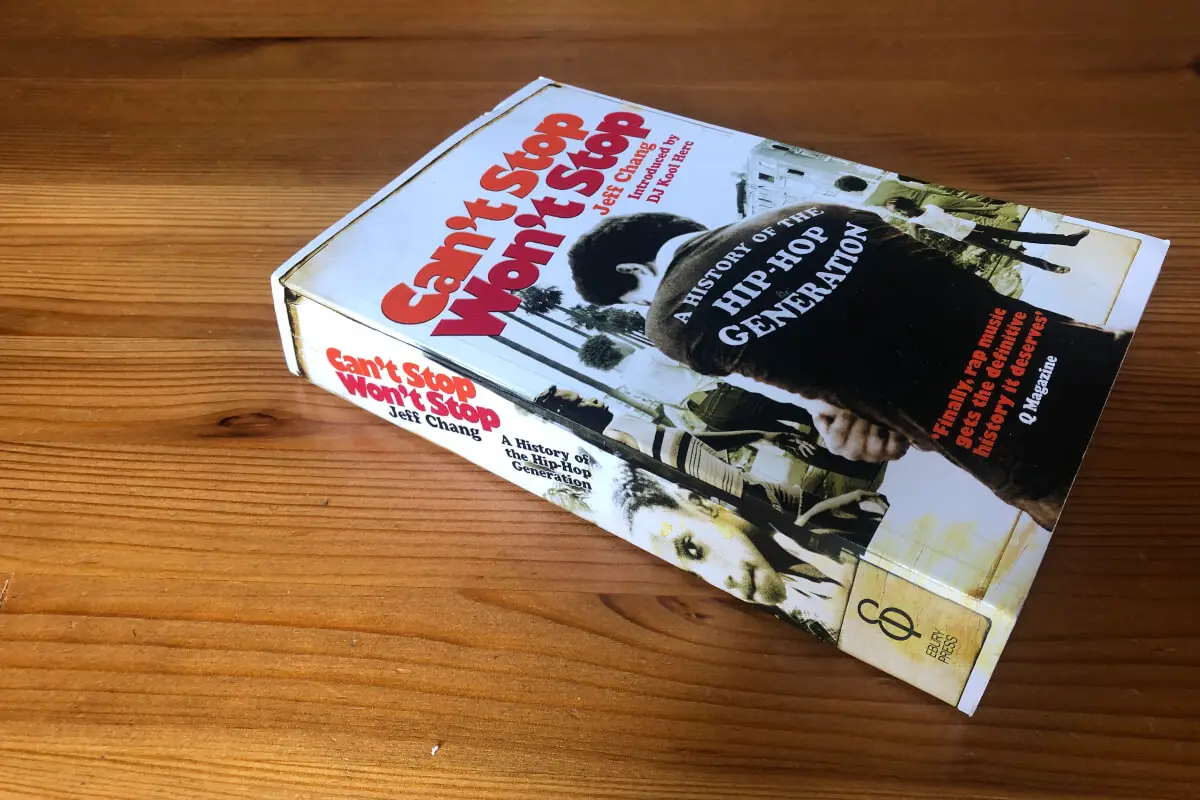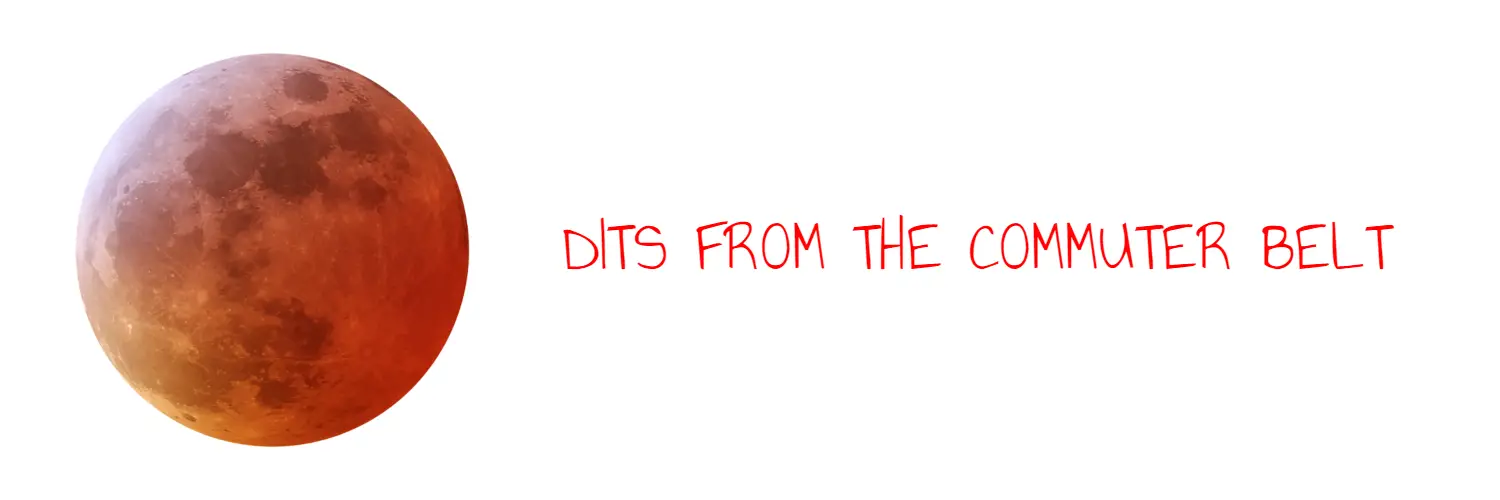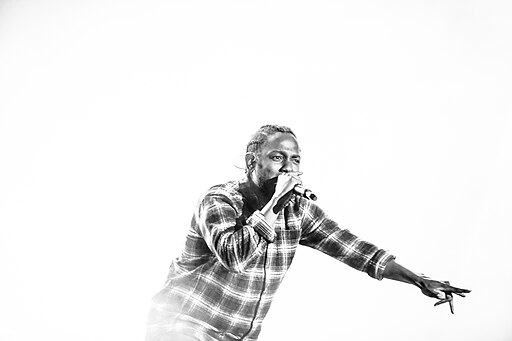Can’t Stop, Won’t Stop: A History of the Hip-Hop Generation

I purchased Can’t Stop, Won’t Stop: A History of the Hip-Hop Generation a few years ago but it was actually released in 2005. This review may be coming to you fifteen years late as a result, but I wanted to challenge myself to read about a genre of music that is a little less familiar to me, and as I’m sure all those that know me would attest, hip-hop – at least in its modern form – has never been my preferred style of music. That said, I’ve found myself discovering a growing cluster of artists over the past decade that have piqued my interest in learning more about the genre and its origins.
Can’t Stop, Won’t Stop is a great place to start for anyone else wanting to improve their understanding of black culture. This feels like an especially important topic right now but whilst it seems incomprehensible that we are still having to explain to others that pervasive racial bias’ still exist in the wake of recent events in America and here in the UK, apparently not everyone got the memo that #BlackLivesMatter. They always have, and they always will.
Whilst a lot has changed in the fifteen years since this book was written, the intro from DJ Kool Herc feels incredibly relevant. Dismissing the tropes of modern rap, he reminds us that hip-hop is not about guns, bling and bravado. Rather, it is about connection. He implores rappers to start a dialogue around serious issues before it’s too late, and we can be thankful for the likes of Kendrick Lamar and Childish Gambino for taking up this baton in the past decade (the less said about the 99% who didn’t, the better).
The book’s initial chapter frames the hardships of black Americans within the context of the great American game of baseball and the historical treatment dished out to breakout black stars. The focus then shifts to The Bronx, where we learn how a white exodus was swiftly followed by an influx of desperate African-American, Afro-Caribbean and Latino families moving in to take their place, forming gangs to protect themselves and their immediate neighbours from one another. Even after the Black Power movement managed to unite them under one banner, this soon gave way to a “defocused rage and a long exhaustion” following a lack of real change, which enabled thieves and drug pushers to move in. Only the gangs and their ‘colours’ could provide any sort of structure amidst the chaos, settling local disputes and cleaning up the streets when the police – now their only common enemy – inevitably failed to step in. Given that so many in The Bronx were without jobs at this time, it’s clear that the gangs provided their only sense of identity, and the book’s author Jeff Chang notes that whilst blues culture developed under the conditions of forced labour by oppressors, hip-hop would soon become the form of music made by young black men who couldn’t find any work at this time.
Can’t Stop, Won’t Stop‘s concern briefly pivots to Jamaica, where the invention of dub music following a studio mistake is shown to have laid the cornerstone for hip-hop’s meteoric rise. For the first time ever, labels and producers were now inclined to create three different versions of a track; the original, an instrumental that someone could rap over, and a ‘dub’ version that provided the producer with creative licence to experiment on.
“The blues had Missisippi, jazz had New Orleans. Hip-hop had Jamaica.”
Lighting a fire under the touch paper that was New York at this time, creative energy from a new underclass finally saw a release, just as punk music was taking off in the UK. “History”, Chang writes, “behaved as if reset to year zero”. But whereas the spirit of punk was raw and vitriolic, and the music almost secondary to black and white nihilism, hip-hop was from the very outset both flashy and colourful, flaunting the spirit of the music. Much of this part of the story aligns with the narrative of The Get Down, the Baz Luhrmann-directed Netflix drama that followed the rise of both hip-hop and disco music through the eyes of a group of teenagers living in The Bronx in 1977 – 78 (would recommend).
Yet whilst it’s hard to underestimate The Bronx’s importance to hip-hop, it’s fair to say that the first half of Can’t Stop, Won’t Stop is a little too New York and in particular, Bronx-centric. Few other voices are heard, and as such Chang’s book feels a little one-dimensional in places. For example, it would have been interesting to hear more about black culture’s growing influence on the UK’s music scene, where white art / punk crowds were more open to new sounds than in the US, where the doors of segregation had to be forcibly knocked down by hip-hop’s finest. On the other hand, whilst it’s also understandable that the book should focus on graffiti and b-boying as two of the original four pillars of hip-hop, for me personally, a single chapter on each would probably have sufficed.
There are of course, nods to some of hip-hop’s most important trailblazers such as The Sugar Hill Gang – whose seminal track ‘Rapper’s Delight’ is often considered the first ever breakthrough hip-hop single and is the subject of an interesting discussion on its cultural impact. I found this to be well-balanced, helping to tell the story of how the MC rather than the DJ became the focus for newly-invested indie labels interested in shaping hip-hop music to fit the standards of the music industry. With hip-hop moving out of the parks, community centres and clubs, and into the lab, Chang claims hip-hop was refined like sugar, leading to subsequent tension between culture and commerce that would dominate for a decade, perhaps two, to come.
Enter Public Enemy, the posterboys for a new breed of hip-hop that was viewed as not just an attack on white society but the previous black generation as well, and one of the few acts to be afforded appropriate screen time by Chang in Can’t Stop, Won’t Stop, which sadly – for me at least – focuses a little too intently on hip-hop as a cultural movement rather than the bands and personalities that shaped it as a musical genre. Notoriously outspoken, it’s amusing to hear that Public Enemy’s PR used to describe himself as the band’s “Director of Enemy Relations”. After Public Enemy and Chuck D, rappers were no longer expected to simply support the revolution, they were its new leaders. With the population continuing to diversify, it became clear that young persons of all races were growing “increasingly uninterested in whitewashed hand-me-downs”, and white kids in the valleys were suddenly deciding to live vicariously through hip-hop.
Its appeal was further helped by the rise of “gangsta rap”. Originating in LA, which is where the book’s attention finally turns to, this controversial yet exciting new sub-genre’s success can largely be attributed to NWA, who were nothing less than a shock to the system that shifted hip-hop’s Overton window to the radical outskirts. Suddenly, it felt like anything was possible. Rage was now hip-hop’s most viable currency and Can’t Stop, Won’t Stop presents how this fostered a new “us vs. them” mentality, comparing the revolutionary programs and universal messages of hip-hop’s big thinkers such as Chuck D and Rakim, with NWA’s instinct to view the streets as a rapper’s only claim to legitimacy. According to Chang, such was the impact of ‘Straight Outta Compton’, renewed importance was instantly attached to where you were from at a time when the gap between rich and poor was already widening. The book relays how this deficit was further exposed by the likes of Ice T in ‘Cop Killer’, an artist and track I remember my Dad telling me about with enthusiasm when I was a teenager.
However, Can’t Stop, Won’t Stop largely glosses over the ’90s. It feels as if the author felt that hip-hop during this era no longer represented what it should, which may or may not be true, but undoubtedly diminishes the book’s claims to be the definitive history of hip-hop up until 2005. There is at least some acknowledgement of important events such as the introduction of SoundScan as a means to track record sales. Chang highlights how this meant that the charts reflected what people were actually buying for the first time ever, and notes that record label executives swiftly realised that, of the new breed of popular markets, only hip-hop’s potential was as yet unfilled. It draws our attention to the subsequent buying up of the indie record labels by the majors, and how this led to a narrowing of voices, and a decrease in the diversity of sounds, opinions, ideas, and news. Artists suddenly had to position themselves as brands operating in multiple spaces, reflecting the fact that major entertainment companies also now operated in more than one sphere. Marketing teams no longer looked to the content of the rappers’ messages as a hook with which to bring audiences together, and instead it became the things that audiences bought that saw hip-hop artists pooled together in sub-genres such as conscious rap, gangsta rap etc.
Perhaps these were contributory factors in Chang’s decision to bypass hip-hop’s journey in the mid-to-late ’90s almost entirely, but it would certainly have been interesting to have learned more about the stories of artists such as Tupac and Notorious B.I.G. One thing that shone through when reading Can’t Stop, Won’t Stop is the power of hip-hop as an art form via which to tell stories that reflected the lives of black Americans, and few artists were considered as important as the two aforementioned in that regard during the ’90s.
As such, this piece of writing doesn’t quite feel like the finished article, which in fairness is not helped by the fact that it was released fifteen years ago. It feels less like a history of hip-hop than a history of black America in the later 20th century and whilst a very welcome addition to the growing canon of material on that subject, it’s perhaps not the story I was expecting.
Perhaps the reason I feel this way is that hip-hop has evolved in the fifteen years since the release of Can’t Stop, Won’t Stop and whilst dominant commercially, it no longer feels like a historical movement. It’s no longer the counter-culture or even the culture; the current generation are the post hip-hop generation, whose taste in music borrows from various different styles of music. Strangely, I now know that this was exactly what hip-hop’s earliest pioneers were striving for from the very beginning, thanks to this book. However, I would have loved for it to focus more on the artists themselves as well as hip-hop’s wider cultural impact, than the sometimes mundane stories of the streets. In a weird way, I desire the exact opposite from the actual music.


